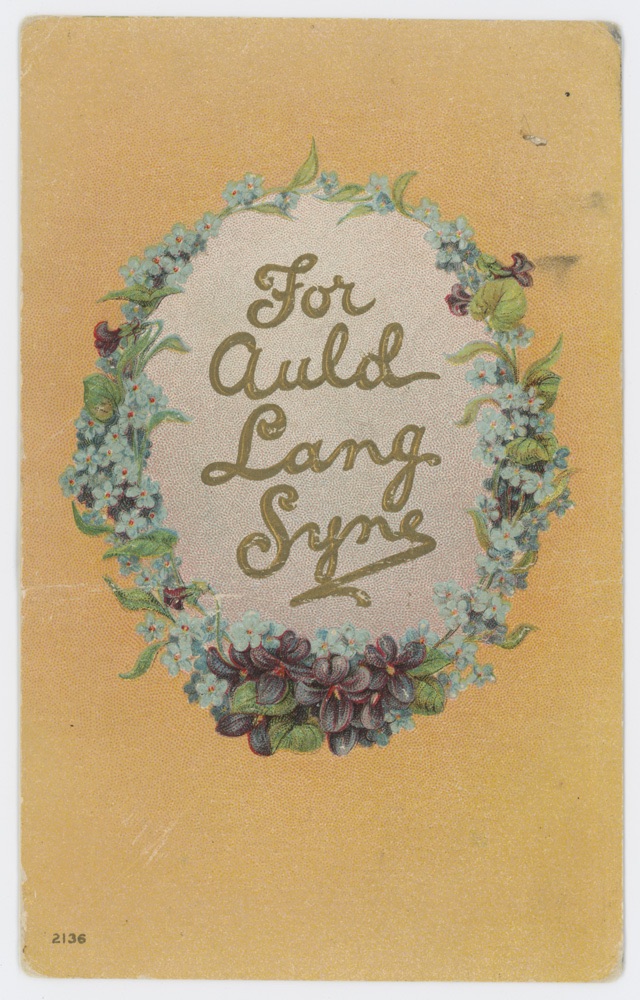More than just a New Year’s Eve singalong, “Auld Lang Syne” holds a depth of history, emotion, and linguistic complexity that deserves to be explored beyond the clinking glasses and tipsy renditions. Let’s raise a dram (or a cup of kindness) and delve into the soul of this iconic Scottish song.

Beyond the Familiar:
First things first, “Auld Lang Syne” is actually part of a very old tradition. While often attributed to the bard Robert Burns, the song existed in various forms for centuries before he documented it in 1788. He collected the lyrics from oral tradition, polishing them and giving them a lasting structure. So, when we raise our voices, we’re echoing voices that have sung across Scotland for generations.
Lost in Translation:
The title itself is a beautiful and evocative phrase in Scots, the language of Burns and a close cousin to English. “Auld Lang Syne” literally translates to “old long since,” a poetic way to say “for old times’ sake.” This sentiment lies at the heart of the song, a bittersweet remembrance of the past and a toast to the enduring bonds of friendship.
More Than Just New Year’s:
While commonly associated with New Year’s Eve, “Auld Lang Syne” wasn’t originally intended for that purpose. It was sung at Hogmanay, the Scottish New Year’s celebration, but also at other occasions throughout the year, from birthday parties to wakes. The song’s themes of remembrance and new beginnings resonate just as deeply at any time of year.

A Global Embrace:
The song’s popularity has transcended borders, with versions sung in countless languages worldwide. From Japanese karaoke bars to South African townships, “Auld Lang Syne” unites people in a shared moment of reflection and celebration.

While “Auld Lang Syne” rings out at celebrations across the globe, Japan bids farewell to the old year with its own poignant melody – “Hotaru no Hikari,” meaning “The Glow of a Firefly.” This gentle song evokes a different kind of nostalgia, melancholic yet hopeful, echoing the faint twinkle of the firefly as it illuminates the fading light. Like “Auld Lang Syne,” “Hotaru no Hikari” transcends its New Year’s Eve association, often sung at graduations and school closures, a bittersweet farewell to chapters past and a gentle encouragement to embrace the unknown. So, as the year’s final flicker fades, both Scotland and Japan remind us to raise a glass, share a song, and remember that within the embers of endings, hope for new beginnings always glows.
It’s a testament to the universal human experience of cherishing memories and looking forward to what lies ahead.
So, the next time you raise a glass and belt out “Auld Lang Syne,” remember the rich history, the poetic language, and the deep emotions woven into every verse. It’s not just a party song; it’s a window into the Scottish soul, a reminder of the connections that bind us, and a hope for a brighter future.

For more music, interviews, and information, check out OurMindonMusic on YouTube, Spotify, Amazon, and more…
OurMindonMusic is available in video, audio, and print:
YouTube: https://youtube.com/@ourmindonmusic
Apple Podcasts: https://podcasts.apple.com/ca/podcast/our-mind-on-music/id1681214946
Spotify: https://open.spotify.com/show/3XugvvL8INE6ApQ3eO4mxU?si=SspfSElJRpiOU1POkLUdyA
JetPack/WordPress: https://ourmindonmusic.wordpress.com/
Substack: https://substack.com/profile/112075031-ourmindonmusic

For regular updates, you can also follow us on:
Twitter: @ourmindonmusic
Facebook: https://www.facebook.com/OurMindOnMusic?mibextid=LQQJ4d
Tumblr: https://www.tumblr.com/ourmindonmusicpodcast
Mastadon: @ourmindonmusic@mastodon.social

Leave a comment